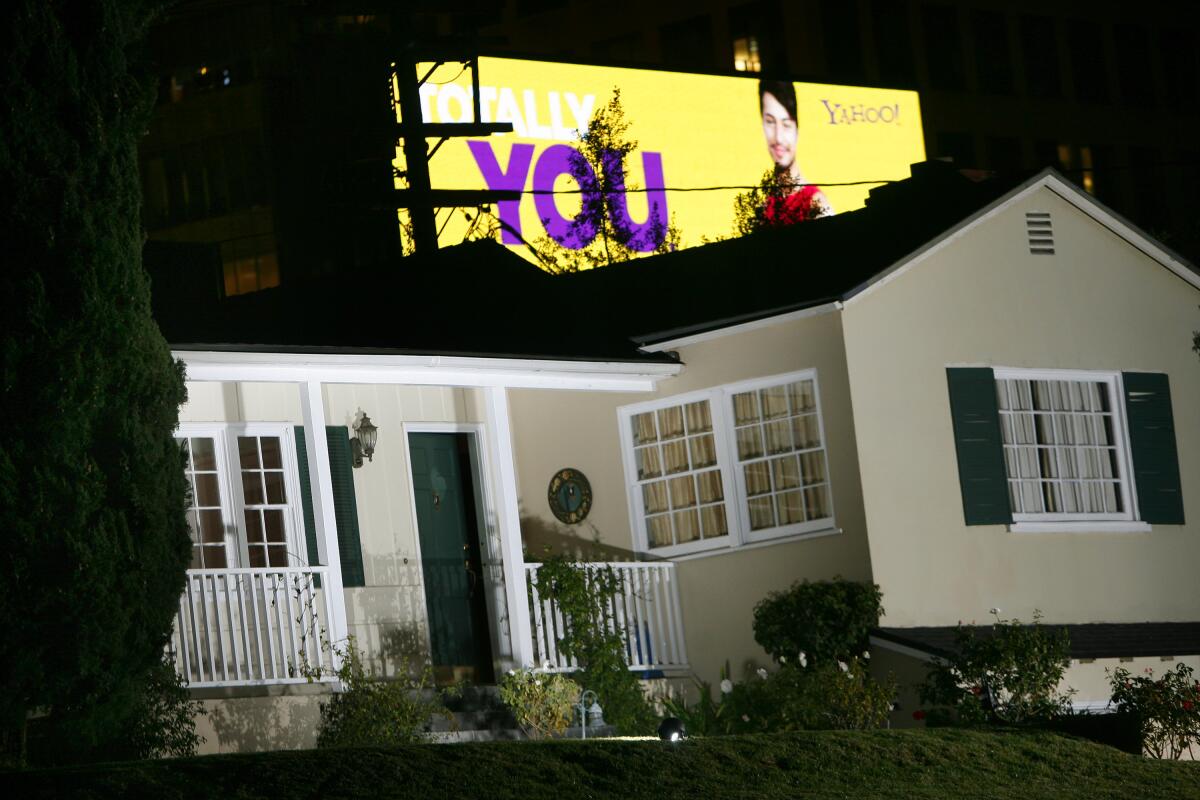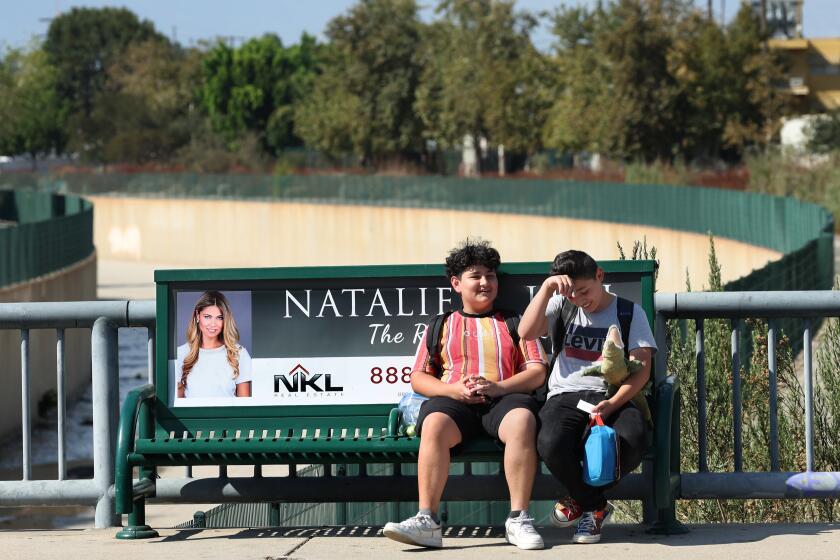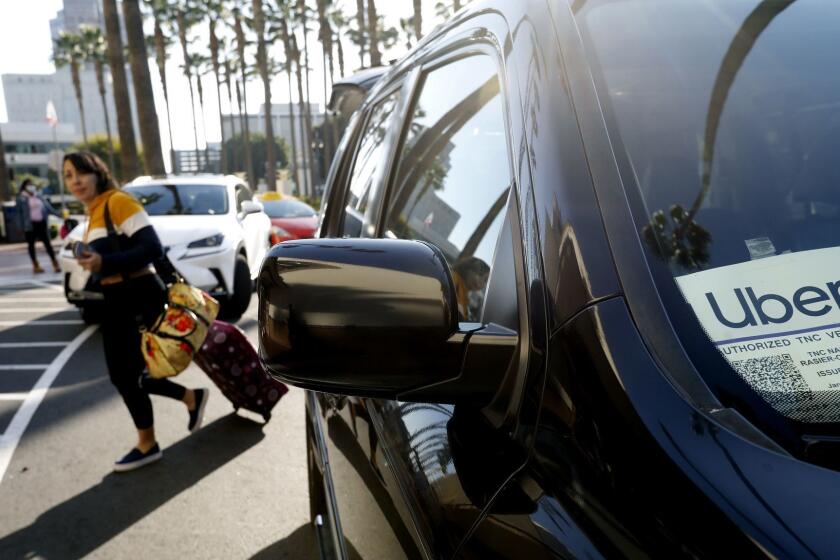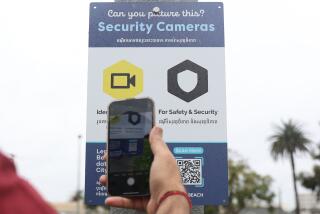Editorial: Los Angeles doesn’t need more bright, blinking digital billboards

- Share via
Mayor Karen Bass and the City Council are ready to gut Los Angeles’ billboard ban and unleash dozens of new bright, blinking electronic billboards next to freeways and in neighborhoods across the city.
Under a plan expected to be approved by the City Council, the city will allow 75 billboard-size digital signs on land owned by the Metropolitan Transportation Authority. There is still time for council members to reject this expansion and protect L.A.’s visual landscape and street safety.
The city of Los Angeles is launching a program that promises 3,000 shelters at bus stops, along with shade trees and other steps to improve riders’ experience.
And they should because Los Angeles is already an extraordinarily dangerous place for pedestrians and bicyclists, with rising numbers of people severely injured and killed by cars. City leaders have failed to make streets safer yet now they are eager to put up electronic signs that are specifically designed to catch drivers’ attention and likely to increase the risk of a crash.
Why? For the money, of course. Metro and city officials have asserted that the billboards will be a public service, providing commuters with information about road conditions and transit alternatives. But seven out of every eight messages will show ads — and the messages will change every eight seconds.
As if drivers in Los Angeles needed another distraction.
This is a scheme to generate revenue, not to serve the public. Advertising is projected to pay up to $500 million over 20 years, split between Metro and the city. Both have promised to spend the money on transportation-related projects, which could include pedestrian and bicyclist safety improvements.
Metro originally proposed 93 billboards. The city’s Planning Commission and some council members whittled the number down to 75 in an attempt to reduce community impact. The plan also requires the removal of about 300 non-electric billboards. Even with the reduction, that’s still a major increase in electronic signage even as the city begins installing about 700 bus shelters that will have digital advertising screens. Get ready to be bombarded with electronic advertisements in virtually every corner of L.A.
The fatality rate here is four times the national average, and we know what to do about it: Design roads that force drivers to slow down.
To be sure, it seems as though there is never enough money to do everything that the public needs or wants government agencies to do. There is a constant search for new revenue, and city leaders have been eyeing digital billboards as a potential cash cow for for years. City law currently bans new billboards outside of sign districts, such as in downtown near Crypto.com Arena. Outdoor advertising companies have also been pushing the city to relax its restrictions. The Metro plan is backed by Bass and Council President Paul Krekorian, who both sit on Metro’s governing board.
Council members need to be cleareyed about what their vote to allow dozens more light-polluting digital billboards will mean for the quality of life in L.A. They’re choosing to sacrifice street safety and the visual landscape for a modest funding stream, and potentially opening the door to more of these bright and distracting billboards. It’s not a good trade-off.
More to Read
A cure for the common opinion
Get thought-provoking perspectives with our weekly newsletter.
You may occasionally receive promotional content from the Los Angeles Times.













